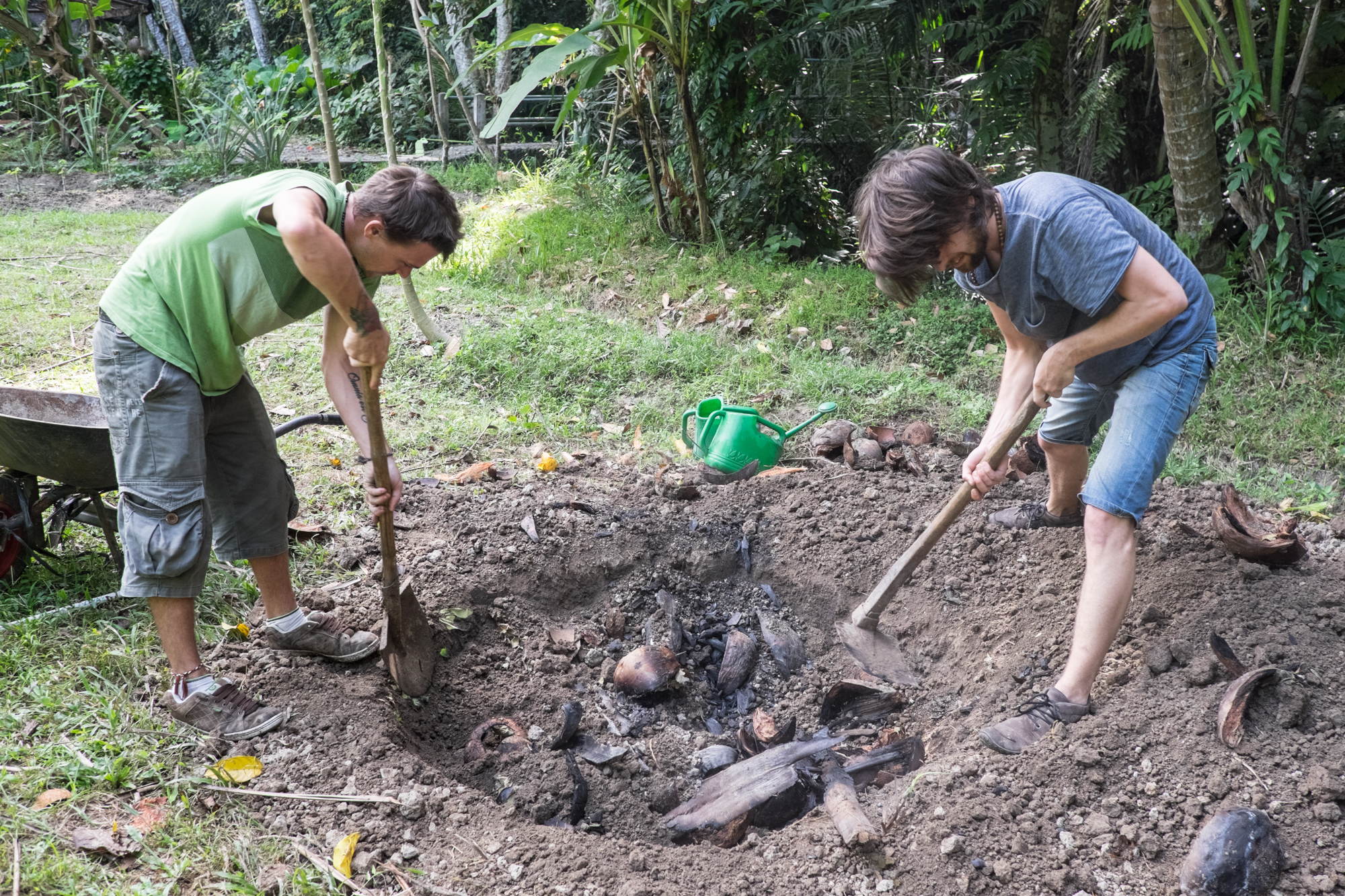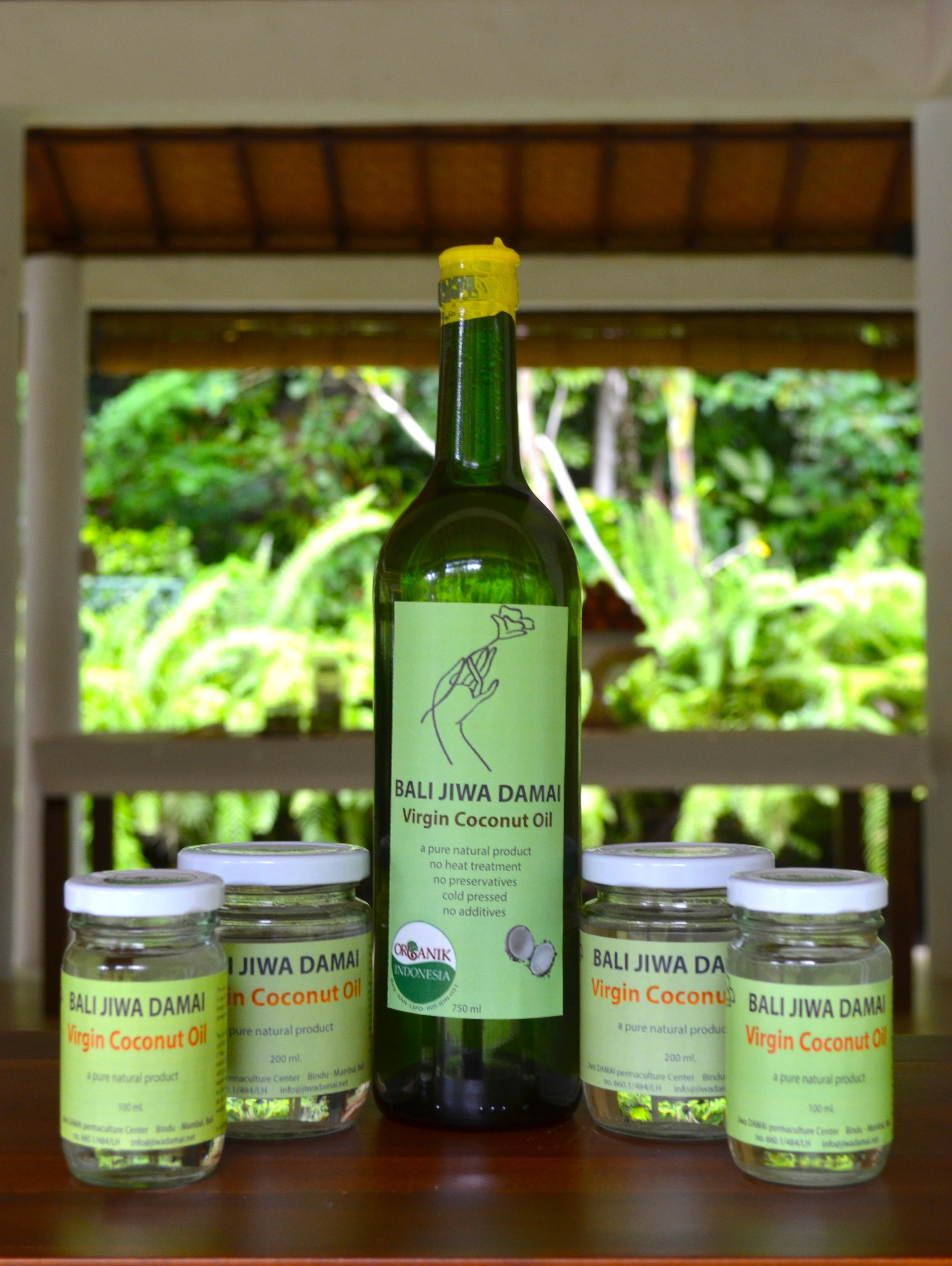In tackling this difficult issue for which there is no known cure at the moment we have developed by our own means and experience and collaborating with specialist from local and abroad a system in ten easy steps to help to coconut trees in our garden survive the invasion of the rhinoceros beetle.
The first step was identifying the problem and symptoms and ascertaining the presence of the rhinoceros beetle. We had found holes in the coconut tree trunk and the leaves of the coconut tree started to look brown and dead. That led us to believe that the Rhinoceros beetle had infected the coconut trees.
The second step was verifying the existence of the rhinoceros beetle in the coconut trees here at Jiwa Damai. There for we sent coconut climbers in the trees to check if the rhinoceros beetles have gone inside the coconut tree leaves. We also had to cut down some trees to see if the larva had infected the bottom part of their trunks. We found the Rhinoceros beetles and larvae from the trees thus ascertaining the infestation of our coconut trees with this insect.
In step three of the plan we went on by cleaning the infected leaves. The coconut climbers cleaned the part of the leaves that were infected. They were very thorough in eliminating only the infested leaves and not make any other additional damage to the trees. They also added salt and Effective Micro organisms (EM) a the top of the trees to help them fight the infestation with the rhinoceros beetle.
In the fourth phase of our program we proceeded in insuring that compost we use for the trees and garden is clean. The larvae of the Rhinoceros beetle are usually hatching in the compost because it has a lot of nutrients. We moved on to filtering our entire compost and found several Rhinoceros beetles and larvae from the compost soil.
Step five meant continuing in eliminating the infected tree parts and compost. We therefore burned the trunks and leaves of the trees that were cut down together with the Rhinoceros beetles and larvae found in the compost, to make sure that these beetles can’t spread to other trees.
In the sixth step of the program we went on analyzing the soil. This was necessary in order to know what kind of nutrition we should feed to the coconut trees.
We then next went ahead and provided the coconut trees with good nutrition in step seven. We digged and changed the soil around the coconut trees into compost soil and added effective micro organisms into the compost soil. This process was done without damaging the roots of the trees and only through digging a surface of around 1,5 meters around them and changing the soil with fresh compost.
After taking care of the material part of the trees we wanted to help also the coconut trees living energy in the eighth phase of our plan. We decided on sending some positive energy from ourselves to help cure them. We started a program where the volunteers and employees of Jiwa Damai hugged each coconut tree personally while sending positive thoughts and vibrations for the trees.
Step nine consisted in playing classical music for the trees. We started playing Mozart’s compositions for the trees to continue giving them even more positive life energy.
Finally, the tenth step was to set in motion a multi-year plan for the support of the healthy growth of the coconut trees and contrast the infestation with the rhinoceros beetle. We involved in the elaboration of this plan specialists in the matter from other places in the world with which we collaborate and exchange information about the progress, results and new perspectives in supporting the coconut trees to resist the rhinoceros beetle infestation. Here we are applying each tree with fungus which has proven to be noninvasive for bees and other insects.
At Jiwa Damai we take great care of our coconut trees because we realize and respect their importance and contribution to the ecosystem and the lives of other plants, animals and us the humans. Not only they provide us with fresh air and shadow but also stabilize the ground, feed the soil and us with their delicious coconuts. We use also use the coconuts from our tree to make oil, soap and other products that can be purchased by our clients and guests.


























